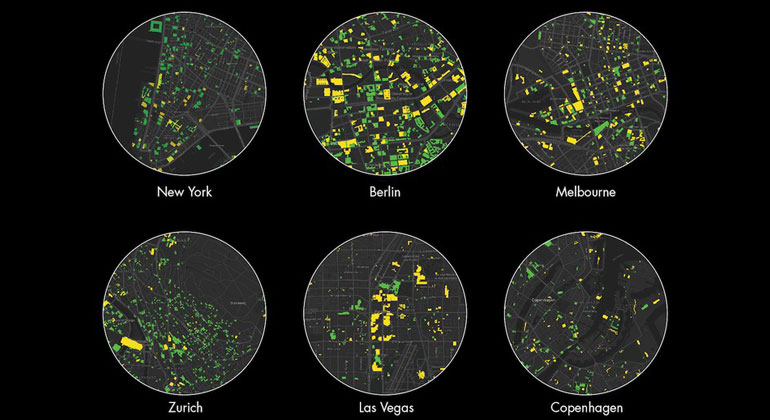Explore Sustainable Roofscapes Around the World
Roofpedia is an open registry of sustainable roofscapes around the world. It uses deep convolutional neural network to detect sustainable roof typologies from satellite images. Footprints of buildings identified with solar panels or rooftop greenery are tagged automatically, and the results are visualized above for a score of cities.
While most studies so far have been focused on estimating the potential of rooftops, Roofpedia enables us to understand the current and actual status of the rooftops, i.e. how many of them are currently occupied with solar panels and/or extensive greenery. Such information advances the state of the art, complements existing studies (including those estimating the potential), and it is useful for several purposes, e.g. gauging the efficiency of government policies, tracking and monitoring pledges by businesses, verifying the use of subsidies, estimating the current carbon offsetting capacity of cities and benchmarking them (see below), and determining how much of the potential has already been realised.
The nature of our project is open — data and code are released openly, and the project is modular, enabling the addition of new geographies and roof typologies.
The Roofpedia Index
We introduce a measure of the penetration of sustainable roof typologies in major cities around the world. Solar roofs and Green roofs mapped by Roofpedia are compared against the total number of buildings and areas of the buildings in a city. Aggregate scores are calculated for both solar and green coverage and cities are ranked with an combined score.
- The results are given in the table. You may click on cities to visit them on map.
- More cities are getting added to Roofpedia as their aerial or satellite imagery become available. If you’d like to contribute images to expand Roofpedia, please email Abraham Noah Wu, the lead developer.
- Full data and code of Roofpedia can be accessed at its GitHub repo.
- A paper describing the project was published in Landscape and Urban Planning.








